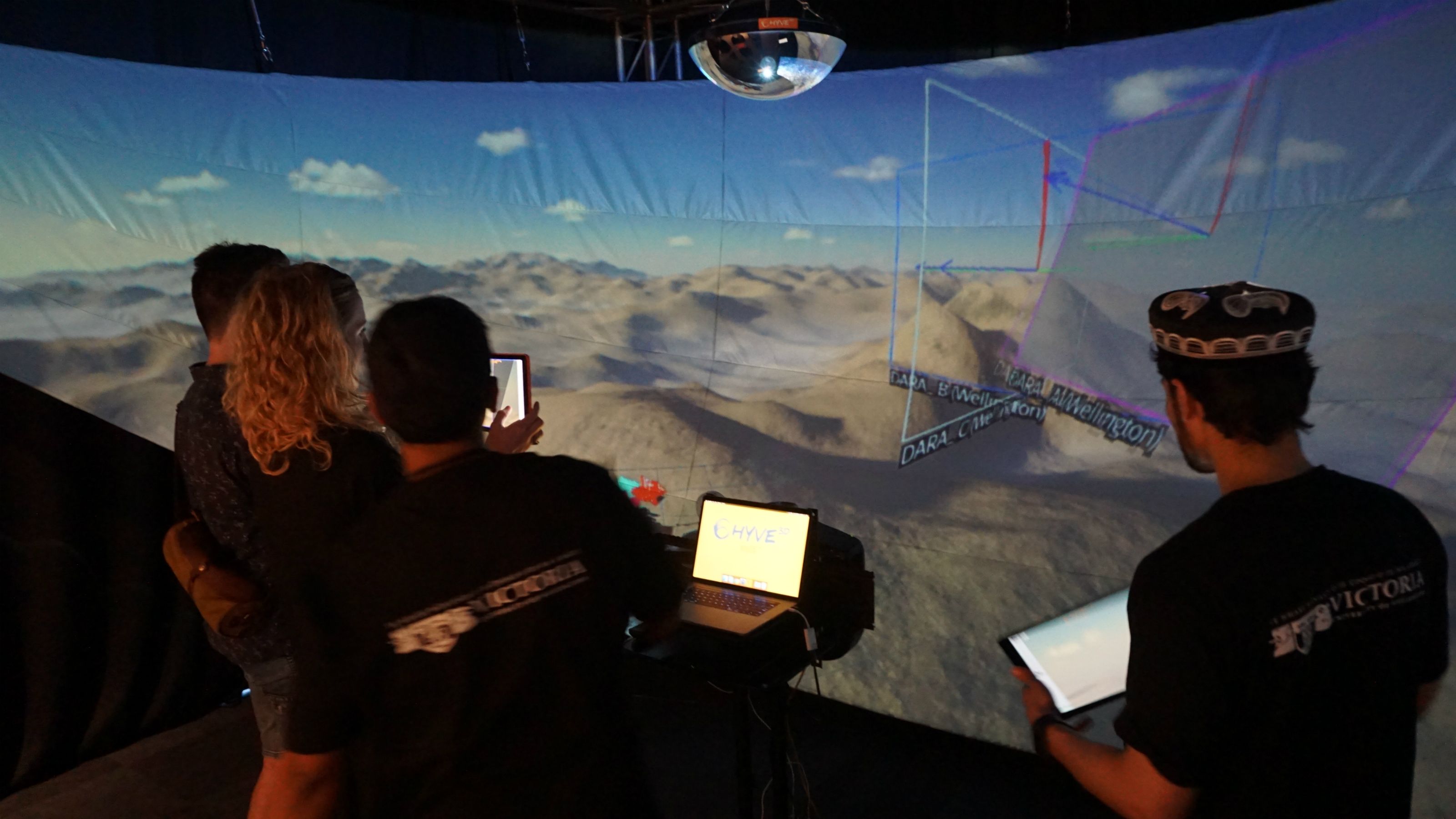Victoria University and Te Papa team up to bring Virtual Reality to life
Victoria University of Wellington shared the latest research in virtual reality last weekend at the Te Papa Virtual Realities showcase.

The event and exhibition ran over three days and was co-curated by Tane Moleta from the School of Architecture with colleagues from Te Papa. Demos from Victoria showcasing staff and student research came from the Schools of Architecture, Design and Engineering and Computer Science, and Associate Professor Dr Leon Gurevitch from the School of Design kicked off the weekend as MC for the sold-out Te Papa Talks: Virtual Realities.
Tane explains, “the event gave people the opportunity to experience live demos, meet the creators and be actively involved in novel ways of design communication.”
Two of the student projects showcased at the event included Postgraduate Architecture students Sky Lo, who showed how VR can be used to create collaborative living spaces, with the aim of creating communities through architectural design, and Serdar Aydin whose research looks at the digital heritage experience of China’s westernmost city, Kashgar.
This digital heritage project uses the Faculty of Architecture and Design’s new Hyve-3D. Dubbed a social, immersive 3-D virtual environment, it is a wraparound screen you stand in front of which displays the images. It doesn’t require headsets so numerous people can experience it at the same time and is powered by the users smartphones.

Dean of the Faculty of Architecture and Design, Professor Marc-Aurel Schnabel says, “virtual and augmented realities will become the norm for designers and architects. These technologies are already becoming mainstream in gaming and entertainment.
“Our Faculty’s unique Virtual Environment Studio allows students and researchers to see how architecture can be produced and communicated seamlessly through digital platforms, and these designs can then be fed into our digital fabrication facilities using 3D printing and robotics.”
Victoria is dedicated to exploring our digital future across disciplines. Researchers from various faculties are collaborating to explore and find solutions to the many challenges and opportunities associated with it.
